Rare Rides: Grand Prix's V8 Finale, the GXP From 2005

The Pontiac Grand Prix was a long-term staple in Pontiac’s lineup, a Driving Excitement alternative to the Buick and Chevrolet cars with which it shared its various platforms. Though it faded from its initial personal luxury prominence, Grand Prix had one final V8 hurrah at the end of its life. It was a sort of return to form after many years with a maximum of six cylinders. Let’s check out some GXP goodness.
In 2004 the new Grand Prix debuted on an updated third-gen version of GM’s long-running W-body platform. For the first time ever, Grand Prix stepped away from its roots and was available only as a sedan. It grew to a long 198.3 inches overall and was either a small full-size or a large midsize, however, you’d like to classify it. On a platform with the Chevrolet Impala and Buick LaCrosse, it was a couple of inches shorter than Impala and marginally longer than LaCrosse. The new Grand Prix represented a welcome step away from the cladding era that Pontiac enjoyed for over a decade prior, and its styling was praised as fresh and distinctive.
In its first model year, all Grand Prix were powered by the blessed Buick 3800 Series III V6, in naturally aspirated L26 guise (200 HP) or as supercharged L32 (260 HP). The sportiest initial trim was the GTP, which was the only one to receive the supercharged engine. All Grand Prix used the same four-speed automatic, as manual transmissions were not of interest to the majority of the 2000s buying public.
During the latter portion of the 2005 model year, the GXP arrived in the Grand Prix lineup. GXP heralded the return of a V8 to the Grand Prix – a feature absent since 1988. The engine in question was the 5.3-liter LS4, an engine based on the Corvette LS1. Good for 303 horses, the 5.3 was shrunken and compacted in various ways to allow fitment into the front-drive W-body platform. The engine was not available in any other vehicle in 2005, but in 2006 made its way to the Impala SS and Monte Carlo SS. And for 2008-2009 it was also available in the LaCrosse Super.
GXP came standard with paddle shifters, a heads-up display, and a performance suspension complete with a .4-inch lower ride height over other Grand Prix trims. StabiliTrak ride control kept things in check on the move. Outside, the GXP was identified with sharper trim on all sides, a revised and more angular front clip, a faux fender vent, dual exhaust, and a different bumper. Chromed alcoa wheels were another GXP exclusive.
But much like the torque steer of a front-drive V8, by the mid-2000s General Motors was out of control financially. GM posted a loss of $10.5 billion in 2005. The upcoming recession sealed GM’s fate and took with it, Pontiac. Grand Prix was canceled after the 2008 model year; its successor technically the G8. But that rear-drive Australian lasted just two years. Pontiac closed out 2010 with three run-off offerings, only one of which was actually a Pontiac. On offer were the G2 (Daewoo Matiz), G6, and Vibe (Toyota Matrix).
The GXP is largely forgotten today, a remnant of General Motors from the moments before its bankruptcy and reorganization. It was the sort of car not many asked for: A torquey transverse V8 paired with front-drive and a fairly appalling interior. Its few customers paid quite a premium for the V8 – $29,335 – just over $42,000 adjusted for inflation. Today’s Rare Ride GXP asks much less at $10,995. It’s traveled just 66,900 miles and has a clean ownership history.
[Images: GM]

Interested in lots of cars and their various historical contexts. Started writing articles for TTAC in late 2016, when my first posts were QOTDs. From there I started a few new series like Rare Rides, Buy/Drive/Burn, Abandoned History, and most recently Rare Rides Icons. Operating from a home base in Cincinnati, Ohio, a relative auto journalist dead zone. Many of my articles are prompted by something I'll see on social media that sparks my interest and causes me to research. Finding articles and information from the early days of the internet and beyond that covers the little details lost to time: trim packages, color and wheel choices, interior fabrics. Beyond those, I'm fascinated by automotive industry experiments, both failures and successes. Lately I've taken an interest in AI, and generating "what if" type images for car models long dead. Reincarnating a modern Toyota Paseo, Lincoln Mark IX, or Isuzu Trooper through a text prompt is fun. Fun to post them on Twitter too, and watch people overreact. To that end, the social media I use most is Twitter, @CoreyLewis86. I also contribute pieces for Forbes Wheels and Forbes Home.
More by Corey Lewis
Latest Car Reviews
Read moreLatest Product Reviews
Read moreRecent Comments
- Theflyersfan Ford. (drops mic)
- FreedMike Sweet car, but that's a silly price.
- Big Al from Oz This article assume that future synthetic fuels will be hydrocarbon based. Hmmm, I don't think a hydrocarbon based fuel will be the answer. Hydrogen might be.
- Big Al from Oz I believe that running the correct tyre pressure is critical for your application. I don't necessarily agree with the author regarding using the manufacturers limits. The reason is those limits are based on driving on blacktop with varying loads, especially in 4x4s. Before disposing of your hard earned cash on sexy and pretty MTs ensure you need them. There is nothing worse that driving or being a passenger in a vehicle with incorrect tyres fitted for the application, not to mention the degraded safety. I have always bought tyres for my needs. I only once bought MTs, every other time good ATs will do the job and even now on my Patrol I run ATs that look almost like HTs because I only drive on sand and some dirt tracks to get me to the beach. HTs are the best tyre for sand. Also for our novice off roaders you are better of in the bush to run a lower pressure to reduce sidewall and tread spiking and shreddinng, you tend to deform the tyre rather than puncture.
- Tassos The son of a good friend, who is also a good friend, and a brilliant (not just in his field but also overall, MENSA caliber), a cardiologist at U Mass Amherst, got one of these. Told me the reason was they were cheaper than comparable BMWS. ..........................................................HE shoulda gone a LEXUS GS, if he wanted a Japanese rear drive pretend sporty car. ......................................He did not ask me tho, he went and bot it. .........................................................The interior looks lousy and not luxurious, and like ALL of TIm's finds, ................................it's WAY OVERPRICED, for a compact 15 year old car.



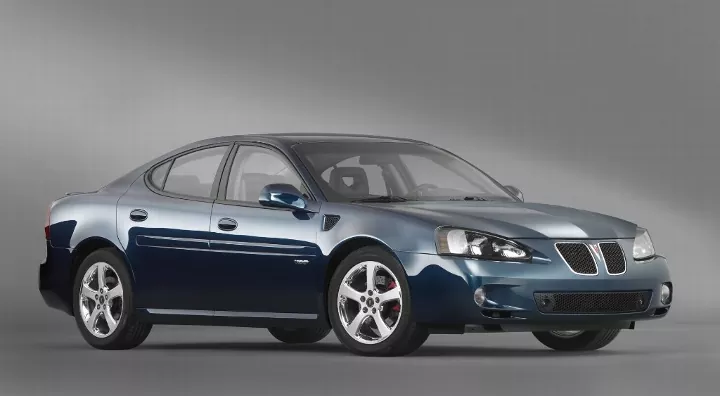
























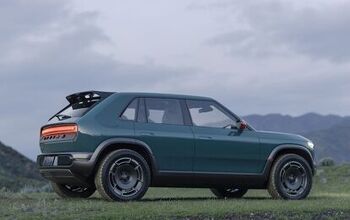
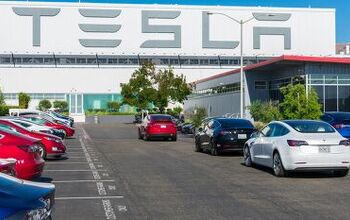


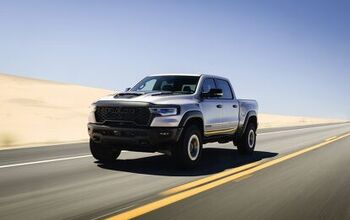


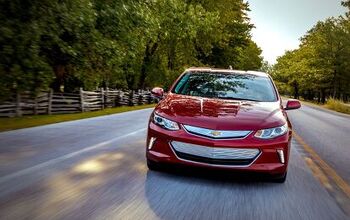
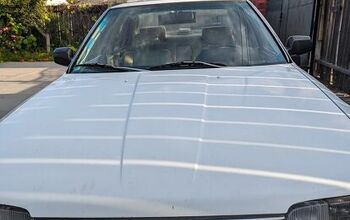
Comments
Join the conversation
I special ordered one of these in 2006, loved the way it drove but the seats were unbearable. Can't beat the sound of the V-8 though
I own a 2006 version. The exterior pics in the article may be a GXP, but the interior pics are not. I believe the GXPs all have the Pontiac logo badge on the ateering wheel, too. Where are the tap shifters on the steering wheel? The HUD is also not visible on the top of the dash. This car(the 2006 version) is as good as, or better than any other domestic mid-sized sedan of the day. I bought mine used 6 years ago. It was taken care of mechanically by the previous owner and I have kept up with regular maintenence. This car is only dumpy to the nose-in-the-air enthusiasts who will never be satisfied with any car. The different sized tires is not that big of a deal. The wider front tires don't cost more than the rears. The car is no supercar, but it does handle remarkably well around town. It will beat alot of newer vehicles off the line and at least to the 60ft line. I just bought a 2019 Impala Premier. 3.6 V6 engine with 305hp and 6-speed auto. 2 more hp than my 06 GXP with V8 and 4 speed tranny. However, the Impala will never beat the GXP off the line. The Impala only really flexes its muscle above 45-50mph. By that time, the GXP is disappearing into the distance. Did I mention the GXP has just over 174k miles on it? Also, I previously owned a 2000 Impala with the Series II 3800. Changed out the Dexcool crap right away. It had normal issues(MAP sensor, intake gasket, etc.). Even broke a rod once. Kept it running and it finally gave up the ghost after 16 years and over 300k miles. The 3800s are very durable motors, as well as the LS4s. P.S. The newer Impala has a Bose sound system. The GXP has the Monsoon system with an aftermarket JVC stereo. The Monsoon by far kicks the ass of the Bose. Just sayin'...